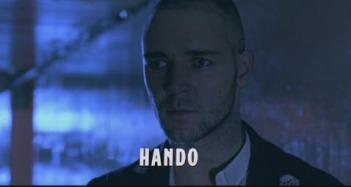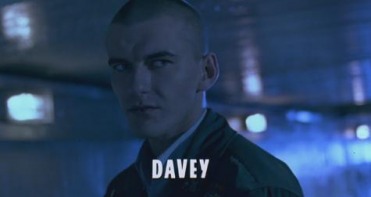The opening scene of Geoffrey Wright’s Romper Stomper (1992)
Any opening scene of a film plays an important in making a first impression on the audience as well as acting as an introduction for the rest of the film. This is exactly what the opening scene of Geoffrey Wright’s Romper Stomper (1992) fulfils these exact purposes, by setting up both the characters and the audience for the rest of the film. The first shot seen is from ground height of the Vietnamese youth riding on skateboards, alongside a train moving down the tracks, representing their movement and mobility, tying into arguments that ethnicities had to travel here to Australia, in order to become part of our nation and our society. Without seeing their bodies or faces, it can quite easily be assumed that they are youth because of their sneakers and attire, and the fact they are riding skateboards. An intertitle than appears, “Footscray, Melbourne” informing the audience of the location, and therefore the films associated context. The shot then changes to that of the point of view of someone on the skateboard, heading down a ramp to the underneath of the train station. This is also representative of moving into the underground, which we then see is controlled by the skinheads gang. As the Vietnamese youth ride into the underground passage, they go through a cloud of smoke or mist, therefore making the scene look quite mysterious and it does not reveal too much about the situation. Then, as the Vietnamese youth skate into the passage way, the scene turns into a slow motion movement, which performs a role of stretching out the moment in time before they run into confrontation with the gang. The sequence then cuts between close up shots of the Vietnamese girl’s frightened face, and the endearing, scary faces of members of the gang. Here we are also exposed to some of the costuming of the skinheads, which is indicative of their tough, ‘take no prisoners’ attitude. One of the gang members then stops the skateboard. The setting here is a darkly lit tunnel covered in graffiti, suiting the scenario that is taking place. The silhouettes are all quite dark as we see the gang members grab the Vietnamese and shove them against the walls. Russell Crowe’s character than approaches one of the Vietnamese males against the wall, and questions him why he ran into him. The camera is positioned virtually exactly side on to the two characters, therefore not aligning the audience exclusively with either of them. Shots intercut with parts of their conversations show the other gang members starting to beat up on the other Vietnamese male and their female companion. We then hear the infamous line “This is not your country” and Crowe’s character starts bashing the Vietnamese male, followed by a wide shot (the first so far) of the entire passageway where all the members of the gang are beating up one of the Vietnamese youth. Throughout these shots, we can hear the groans and pleas of the Vietnamese, with the thuds of flesh upon flesh and the Australian accents of the gang members hurling some abuse. The violence continues to escalate, and there is one intercut shot of the back of a gang member, who has the word “Skins” embroidered on the back of his denim vest, indicating the gangs association with this particular demographic, community and point of view. Then we see the next shot as if it was from the view of the Vietnamese lying on the floor getting kicked, looking up to the violent faces of the gang members. The a medium shot of Crowe’s face comes on, with the intertitle of his character name “Hando” and a menacing look on his face, followed by an almost exactly the same shot of fellow gang member Davey, concluding the film’s first sequence with a clear introduction to what can be assumed will be two of the film’s main characters, their social context and moral beliefs, and carelessness to act upon them.


